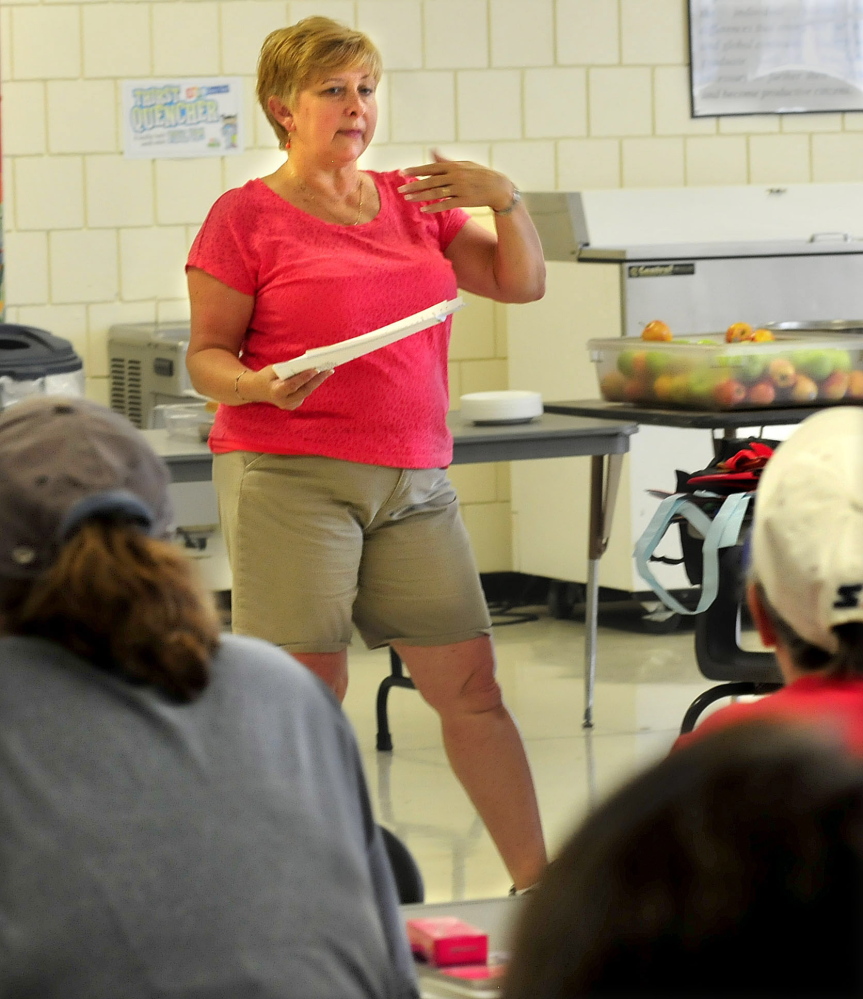SKOWHEGAN — Who said there is no such thing as a free lunch?
Or a free breakfast?
As of this week, which is the beginning of the 2014-15 school year, all 2,600 students in all seven schools in School Administrative District 54 are eligible for free breakfast and free lunch as part of a federal program launched in 2010.
That’s every day, no questions asked, and with no proof of income eligibility required.
“It’s brand new for the state of Maine. It’s a federal program that just came to the Northeast this year after pilot programs that they tried in other areas of the country first,” said Laura Pineo, the Skowhegan-based district’s school nutrition director. “It’s called the Community Eligibility Provision. It allows us to do free breakfast and lunch for every student without cost to the family, and there’s no requirement of their income level.”
The federal program, administered by the U.S. Department of Agriculture, is offered under the Healthy, Hunger-Free Kids Act, which was enacted in 2010. Participating districts must have identified at least 40 percent of their enrollment as eligible for free meals, agree to serve free lunch and breakfast to all students, and not collect free and reduced-price applications from households in the district.
David Hartley, a child nutrition services specialist with the state Department of Education, said the Skowhegan district is one of only six schools or districts in Maine participating in the program. The other participants are RSU 31, based in Howland; the Caswell School in Northern Aroostook County; RSU 88 in Van Buren; one school in RSU 13 in Rockland; and five schools in the city of Auburn.
SAD 54 Superintendent Brent Colbry said the program will receive about $1 million in federal funding during the school year to pay for the program. Any deficit or shortfall in program reimbursement from the federal government, which Colbry said would be minimal, will be offset by a la carte cash sales at the high school and cash paid by teachers, other staff members and other adults who buy food in school district cafeterias. The district employs more than 400 people.
He said kitchen staff salaries are paid for as part of the program, with no local tax dollars involved in it.
SAD 54 schools are Bloomfield Elementary, Margaret Chase Smith Elementary, the high school and the middle school, all in Skowhegan; Millstream Elementary in Norridgewock; and Canaan Elementary. Elementary schools in Smithfield, Mercer and Cornville, also SAD 54 communities, were closed over the past several years.
“We’re stepping out. We’re stepping out because it’s the right thing to do for kids,” Colbry said. “Other people are watching us to see how this goes. We’re trying to assess the risk in doing this. We looked at who has been doing this across the country for a year or two or three, and there has not been one single school district in the country that once they stepped into the program dropped it.”
Breakfast and lunch are provided at no cost to the student, Pineo added, so why wouldn’t students — and their parents — take advantage of the program?
“For some kids, that’s the only meals they’re going to get that day,” she said.
Breakfast at SAD 54 schools consists of cereal, fresh fruit, juice and milk. Lunch includes fresh fruit, a hot entree, milk and whole-grain bread.
Pineo said the new program for Maine replaces the free and reduced-price lunch and breakfast program, which was income-based. The eligibility was based on families receiving some sort of federal or state assistance, such as food stamps or Temporary Assistance for Needy Families.
In SAD 54, that was about 47 percent of the student population. Other income-based designations brought the total eligible for the free or reduced-price food programs to 53 percent.
“Now everybody’s eligible,” Pineo said.
Colbry said the new program also eliminates the stigma of being on the free and reduced-price programs.
“Our poverty rate is so high, but assuming there isn’t any stigma anymore, you’re going to get more kids eating,” he said. “We think we’ll have greater participation larger numbers of kids taking advantage of this, and that makes the program work. The motivation is academic, because if kids are hungry, they can’t focus.”
Colbry said families that were paying for breakfast and lunch for their children at school, even at reduced rates based on income eligibility, will be saving money with the program. He also stressed that families that were eligible under the old system continue to fill out the free and reduced-price lunch application forms to maintain the district’s current status for eligibility under several federal grant programs.
Doug Harlow — 612-2367
Twitter: @Doug_Harlow
Send questions/comments to the editors.



